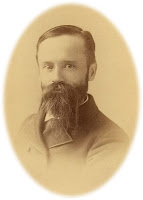 |
| New Orleans in 1873 |
The literary implications of Mardi Gras in 1873 were of a different order. Eagerly observing the Comus parade was journalist and author Edward King. He was in town as part of a grand tour of the former Confederate States which formed the basis of a series of pioneering articles for Scribner’s Monthly, later published in a single volume as The Great South (1875). King’s sympathetic portrait of the South was a vital part of the national narrative of reunion that was just getting underway. His glowing portrait of New Orleans’ Mardi Gras celebrations – which pointedly ignored the politics on display – was clearly designed to enchant Northern readers:
Thousands of people assemble in dense lines along the streets included in the published route of march; Canal street is brilliant with illumination, and swarms of persons occupy every porch, balcony, house-top, pedestal, carriage and mule-car. Then comes the train of Comus, who appears only at night, and torch-bearers, disguised in outré masks, light up the way… After the round through the great city is completed, the reflection of the torch-light on the sky dies away… and the fearless, who are willing to usher in Lent with sleepless eyes, stroll home in the glare of the splendid Southern sunrise, yearly vowing that each Mardi-Gras hath verily surpassed its predecessor.
King’s depiction of Mardi Gras for a national audience helped establish Carnival in New Orleans as a tourist destination. But it was not the most important literary consequence of Carnival in 1873. Whilst watching Comus parade through the streets of New Orleans, King befriended a part-time journalist and part-time cotton clerk named George Washington Cable (pictured). In this casual acquaintance, as Christopher Benfey
After the parade, Cable took King on a tour of the city, and the pair ended up at Cable’s home in the Garden District. There, he read King the stories about New Orleans that he had been working on in his spare time. King was so smitten with what he heard that he lobbied his editors at Scribner’s to publish them. Eventually, they did: Cable’s “Sieur George” was published in October 1873. Soon, Cable was poised at the head of a Southern literary renaissance. Just as swiftly, his vision of New Orleans – a vision that was marked by a profound concern for the effects of slavery, war and Reconstruction in a way that was diametrically opposed to the neo-Confederate satires of the Comus Krewe members – became the dominant popular image of the city. All thanks to a chance Mardi Gras meeting. Fun, yes. But serious fun.
*Thomas Ruys Smith is a Lecturer in American Literature and Culture at the University of East Anglia in the UK. His new book, Southern Queen: New Orleans in the Nineteenth Century

No comments:
Post a Comment
Note: Only a member of this blog may post a comment.